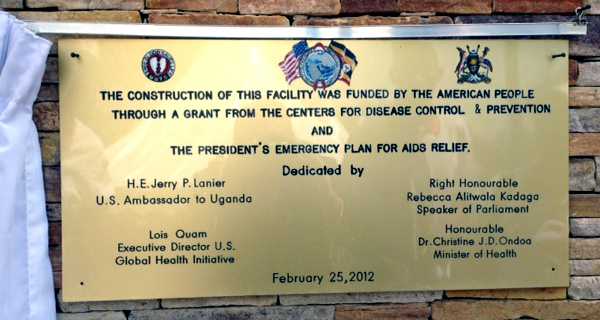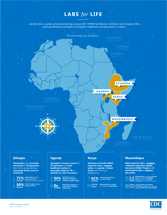Global Health Initiative Executive Director Opens CDC-Supported Uganda Blood Transfusion Service Headquarters

Lois Quam, Executive Director of President Obama’s Global Health Initiative (GHI), who visited Uganda from February 21-26 to support the Ministry of Health's effort to reduce maternal deaths, joined the Honorable Ambassador Jerry P. Lanier for the official opening ceremony for the new Uganda Blood Transfusion Service (UBTS) blood bank and laboratory, which was constructed with funds from the American people. The opening ceremony occurred Saturday, February 25, in Kampala.
UBTS is the Ministry of Health’s department responsible for making available safe and adequate blood for all hospitals and health centers in Uganda. With support from the US Centers for Disease Control and Prevention (CDC), UBTS has developed a centrally coordinated national blood service with a decentralized network of seven regional blood banks and six collection centers. This new blood bank, laboratory, and administrative block in Kampala are in addition to two previously completed purpose-built regional blood banks in Mbarara and Mbale as well as two others currently under construction in Fort Portal and Gulu—all of which were constructed with funding from CDC.
Ensuring a safe and adequate supply of blood from regular, voluntary, non-remunerated donors is critical to Uganda’s national health system because medical injections and blood draws are among the most common health care procedures worldwide. Women and children are at greatest risk from these procedures, due to frequent use of blood transfusions to treat complications during pregnancy, childhood anemia associated with malaria, and various trauma incidents. Safe medical injection practices protect not only patients, but also local community members and health care workers who are routinely exposed to needles and other medical sharps.
“When a woman bleeds to death during child birth, her nation bleeds too,” said Quam. “We must do better.”
CDC, through the US President’s Emergency Plan for AIDS Relief (PEPFAR), is supporting blood safety programs through infrastructure and laboratory development, technical assistance and training, and universal testing of blood units for HIV and other transfusion-transmissible infections. In addition to promotion of universal precautions, CDC works with the Ministry of Health to reduce demand for unnecessary injections and promote appropriate use of transfusions, in addition to developing and strengthening national blood transfusion services broadly. Since the beginning of our support to UBTS, annual blood collections have increased from 106,996 units in 2004 to 202,939 units in 2011—an almost 100 percent increase.
As part of GHI, the American people are investing $63 billion world-wide over six years to help partner countries like Uganda improve their health systems, and the American people provide over $400 million annually in health assistance to Uganda. GHI presents all US Government agencies working in Uganda with the opportunity to increase the impact of their work through increased coordination and collaboration.
Labs for Life Infographic:

Get email updates
To receive email updates about this page, enter your email address:
Contact Us:
- Centers for Disease Control and Prevention
1600 Clifton Rd
Atlanta, GA 30333 - 800-CDC-INFO
(800-232-4636)
TTY: (888) 232-6348
24 Hours/Every Day - Contact CDC-INFO
 ShareCompartir
ShareCompartir


